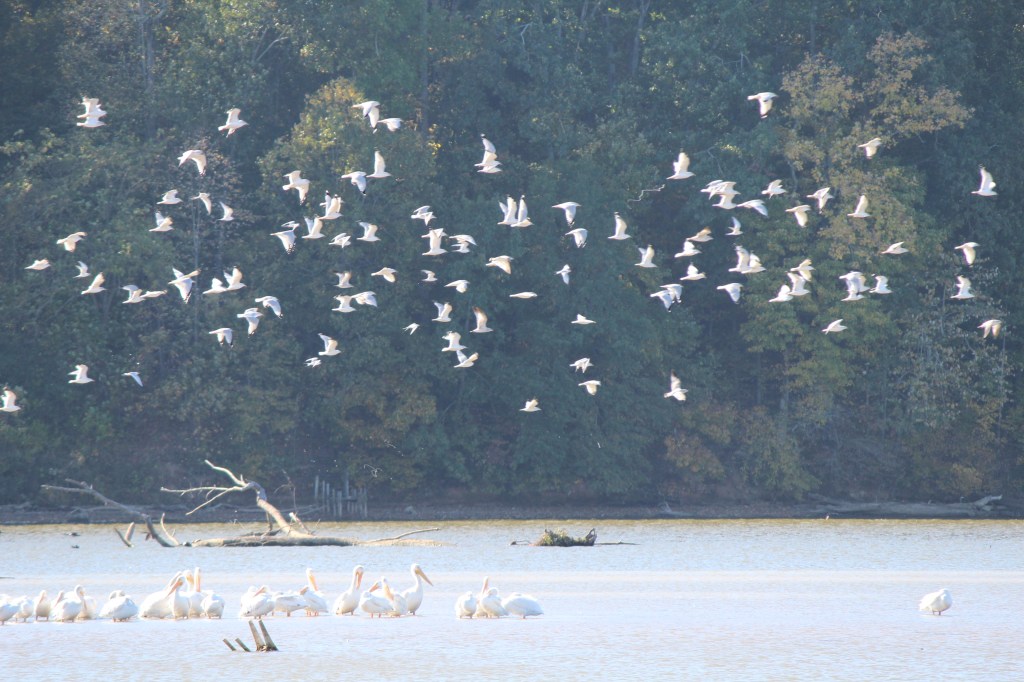March of the pelicans
Published 11:00 am Wednesday, October 26, 2022

- Pelicans flying and floating on the Elk River in October 2022.
Twenty years ago, spotting a white pelican on the Elk River wasn’t unheard of, but it was rare. If a person saw them, it was during the pelicans’ fall migration. In the 2000’s, something changed. Flocks of the large white birds began appearing on the Elk River for the first time, and they have been returning in greater and greater numbers each year and staying throughout the winter months.
Retired Athens State University professor and Elk River resident Penne Laubenthal wrote in her “RiverVue” blog on the Swampland website in 2009,
Trending
“White Pelicans are a rarity on Elk River. I had never seen one north of Gulf Shores, but on Christmas morning of 2007, a friend down the river called to say that a dozen White Pelicans were winging our way in the midst of a flock of cormorants. I had despaired of ever sighting pelicans on Elk River, but suddenly, there they were — resplendent in all their pristine glory, like outlandish angels flying in formation. Last Christmas I did not see them, but this morning, Dec. 17, over one hundred arrived at our end of the river — this sans fellow cormorants.”
Today, visitors to the Elk River can find hundreds, possibly thousand of the birds floating like a giant white cloud on the river. Pelicans prefer shallow waters and the Elk River provides a great place to forage for fish as the river’s water drops making the fish easier to spot and corral.
The American White Pelican is one of the largest birds native to North America with wingspans up to 12 feet. Traditionally, the pelican has wintered along the coastal regions of California and Florida. Pelican numbers declined during the ‘50’s and ‘60’s due to eating fish contaminated with DDT.
Pelicans can eat approximately three pounds of food each day, flying up to 100 miles to a food source. They eat mostly shad and are not considered a threat to the species of fish sought by fishermen.
Look closely while observing pelicans on the Elk River, double breasted cormorants are likely among them. According to the Cornell Lab, “They often forage for fish together, although they don’t usually eat the same fish and they don’t hunt at the same depths of the water. Cormorants will even build their nests and raise their young within pelican colonies.”





